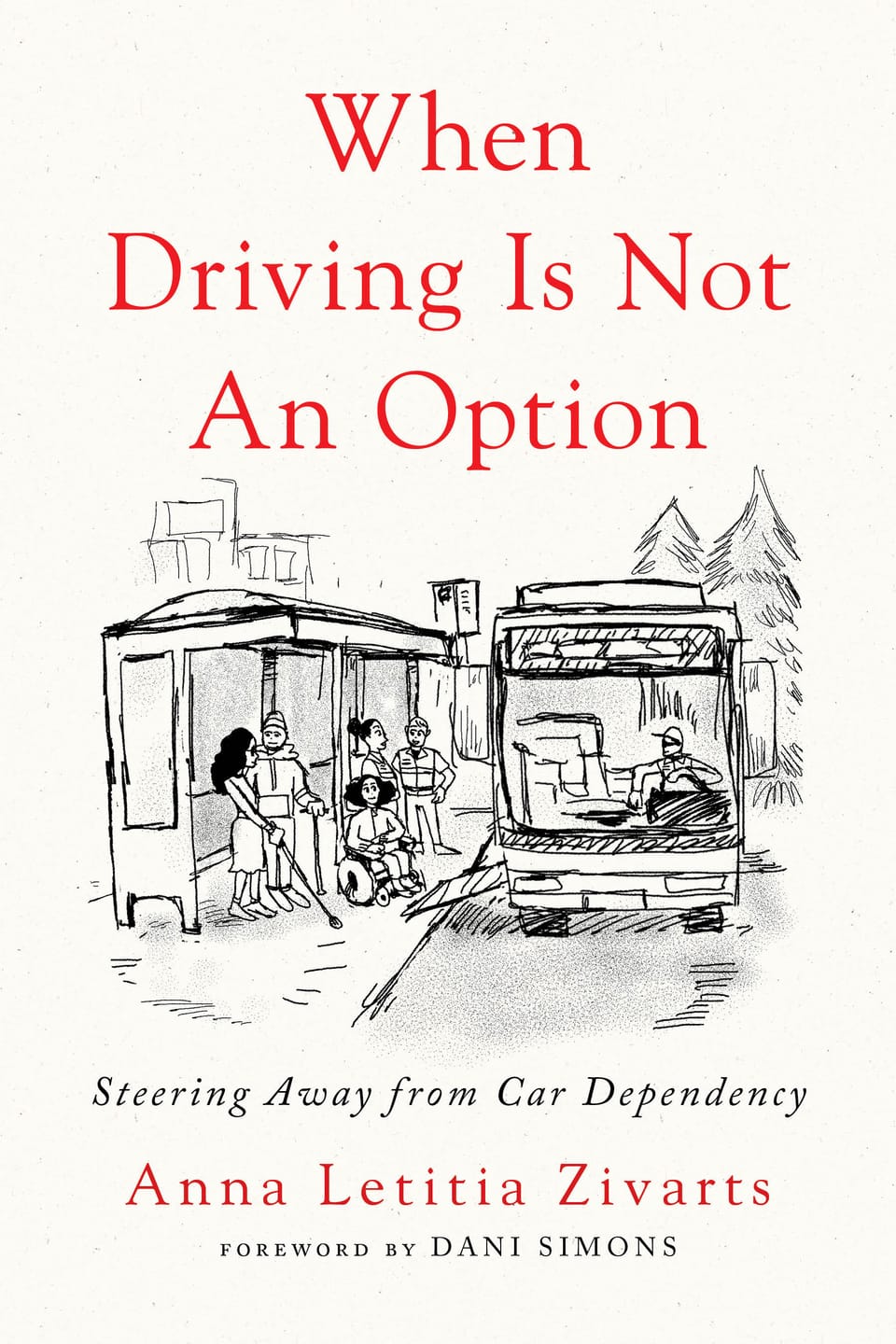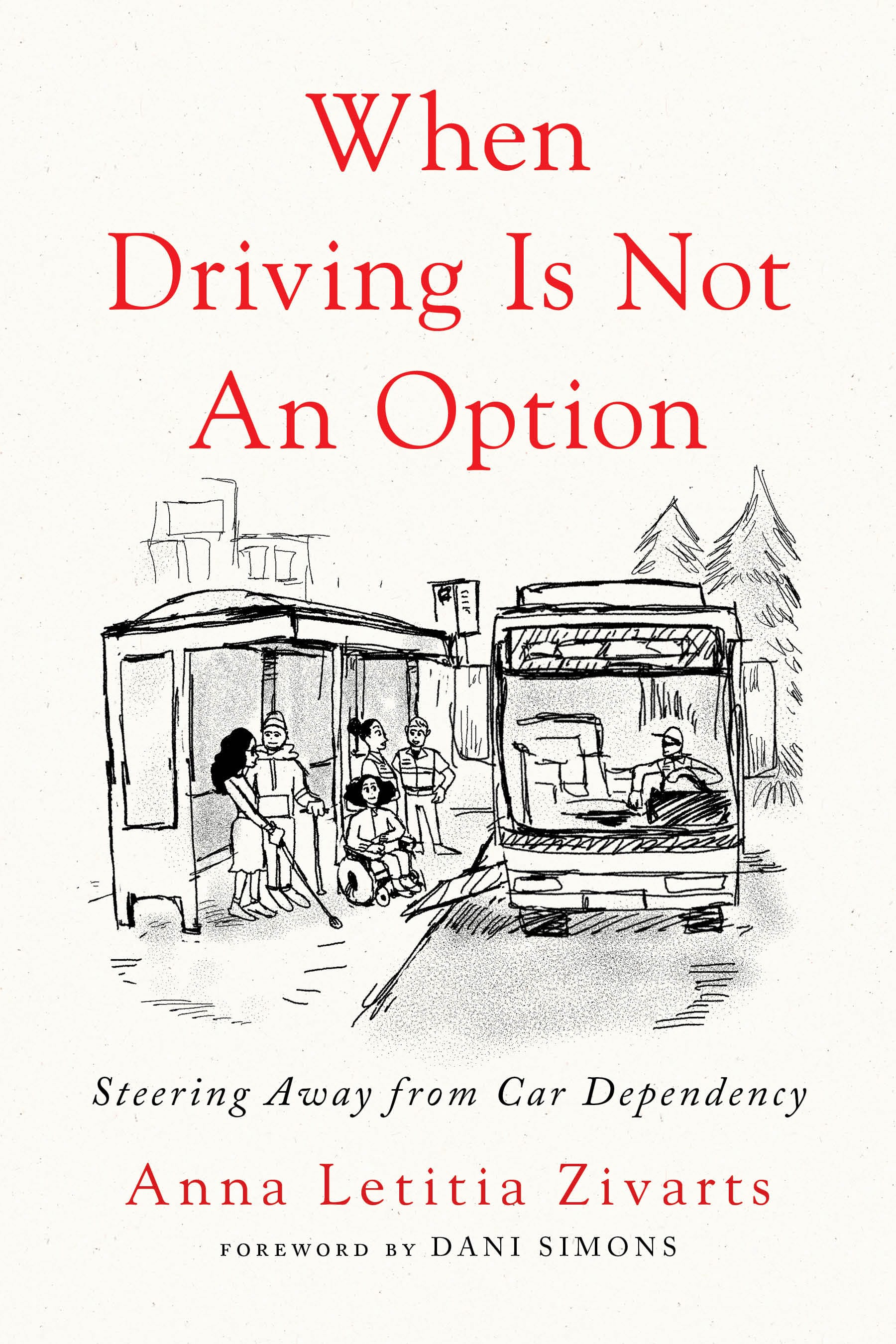When Driving Is Not an Option

Hello kind humans! What's the future of transportation? Whatever it looks like it should include people who don't drive. I'm pleased to offer 5 paperback copies of When Driving Is Not an Option: Steering Away from Car Dependency by Anna Letitia Zivarts published by Island Press. You can also read this piece by Anna Letitia Zivarts and Cecelia Black, "Robotaxis Won’t Get Us There, So Let’s Stop Being Used to Sell a Future that Doesn’t Serve Us" from my website Disability Visibility Project. Details below.

About the book
One third of people living in the United States do not have a driver license. Because the majority of involuntary nondrivers are disabled, lower income, unhoused, formerly incarcerated, undocumented immigrants, kids, young people, and the elderly, they are largely invisible. The consequence of this invisibility is a mobility system designed almost exclusively for drivers. This system has human-health, environmental, and quality-of-life costs for everyone, not just for those excluded from it. If we’re serious about addressing climate change and inequality, we must address our transportation system.
In When Driving is Not an Option disability advocate Anna Letitia Zivarts shines a light on the number of people in the US who cannot drive and explains how improving our transportation system with nondrivers in mind will create a better quality of life for everyone.
Drawing from interviews with involuntary nondrivers from around the US and from her own experience, Zivarts explains how nondrivers get around and the changes necessary to make our communities more accessible. These changes include improving sidewalk connectivity; providing reliable and affordable transit and paratransit; creating more options for biking, scooting, and wheeling; building more affordable and accessible housing; and the understanding the unrecognized burden of asking and paying for rides.
Zivarts shows that it is critical to include people who can’t drive in transportation planning decisions. She outlines steps that organizations can take to include and promote leadership of those who are most impacted—and too often excluded—by transportation systems designed by and run by people who can drive. The book ends with a checklist of actions that you, as an individual living in a car-dependent society, can take in your own life to help all of us move beyond automobility.
When the needs of involuntary nondrivers are viewed as essential to how we design our transportation systems and our communities, not only will we be able to more easily get where we need to go, but the changes will lead to healthier, climate-friendly communities for everyone.

About the author
Anna Zivarts is a low-vision parent, nondriver and author of When Driving Is Not an Option: Steering Away from Car Dependency (Island Press, 2024). Anna created the #WeekWithoutDriving challenge and is passionate about bringing the voices of nondrivers to the planning and policy-making tables. Anna sits on the boards of the League of American Bicyclists, the Pacific Northwest Transportation Consortium and the Washington State Transportation Innovation Council. She also serves as a member of TRB's Committee on Public Health and Transportation (AME70) and the National Aging and Disability Transportation Center Coordinating Committee.
Details
1) Any disabled person in the US is eligible to receive a paperback. You do not need to disclose any details about your disability.
If you already received a book from one of my previous giveaways, please consider letting other people have a chance.
2) If you do not receive a reply that means the books have been claimed or you did not include all the required information.
3) Send an email to DisabilityVisibilityProject@gmail.com with 'Anna Zivarts Giveaway’ in the title of the message. Do not reply to this post!!
4) Include the following information in your message:
- First and last name
- Mailing address
Please note: I will send this information along with your email address to the publisher. They are responsible for confirming your details and sending you the book. Please be patient!
Member discussion